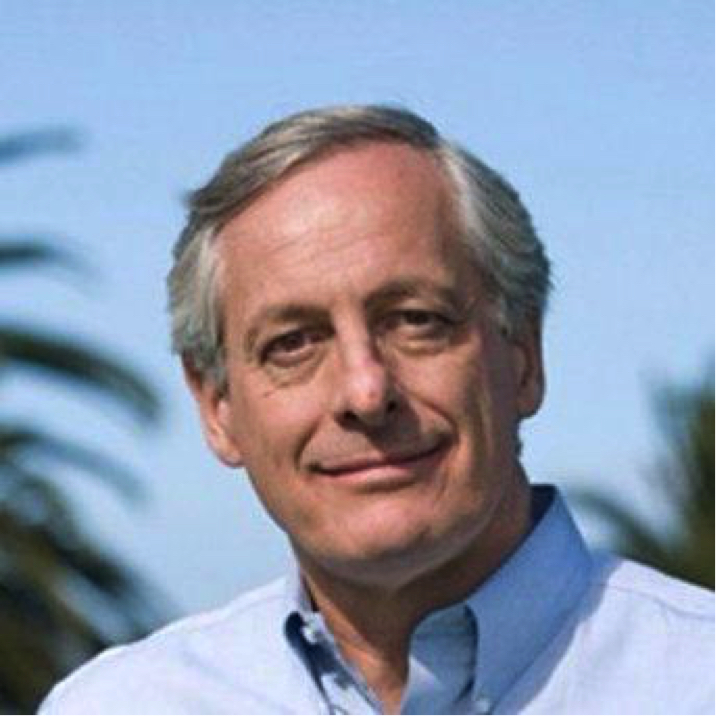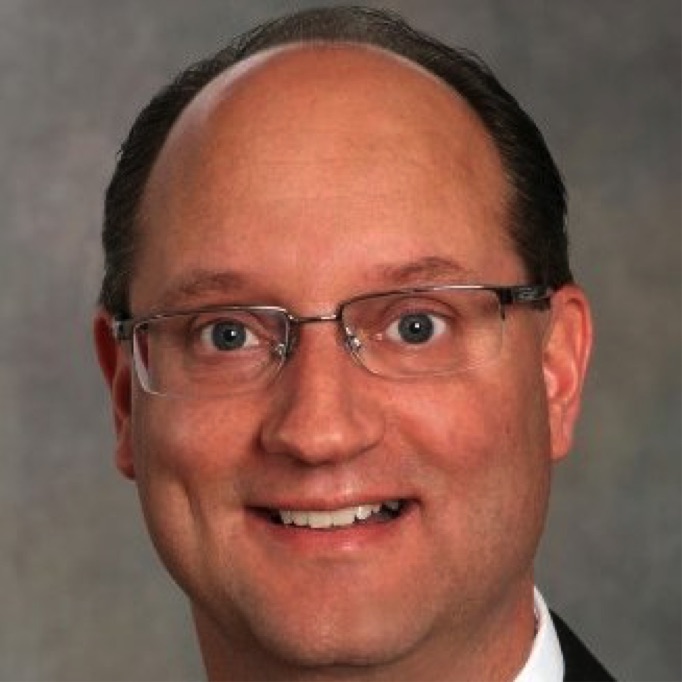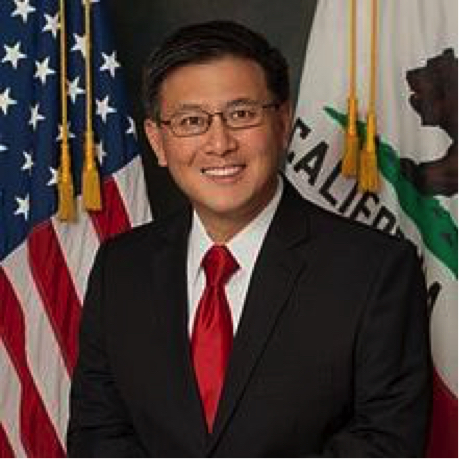Silicon Vikings' Outlook
The California based Silicon Vikings first meeting of the year benefitted from experiencing the initial actions of the new administration.
-
 Bill Reichert, managing director, Garage Technology Ventures. Photo by Silicon Vikings
Bill Reichert, managing director, Garage Technology Ventures. Photo by Silicon Vikings -
-
The Silicon Vikings opened their new year with a formal program titled “Tech Forecast 360,” hosted by Lars Johansson at the K&L Gates law offices, high atop Embarcadero Center 1.
-
 Scott Anderson, chief economist, Bank of the West. Photo by Silicon Vikings
Scott Anderson, chief economist, Bank of the West. Photo by Silicon Vikings -
-
The U.S. Perspective
Scott Anderson, among Bloomberg's top 10 economists and Bank of the West’s chief economist, spoke on the national and global economic trends, admitting that for now we face economic uncertainty. However, based upon previous economic trends, the following factors will continue until acted upon adversely:
Trump inherited an economy that continually improved over the last half dozen years, with earnings up and an end to the profits recession — Anderson expects 4% GDP growth, which may drop to 3 or 3.5%, since the markets have already accounted for the effects of Brexit; and commodity prices should rebound, especially in oil, and the U.S. labor market will strengthen, though not the unions — Anderson expects us to continue our seventh year of economic growth after President Obama rescued the country from the Great Recession.
Still, according to economists, and contrary to the new president’s view, we already have achieved full employment (i.e., only 4% unemployment). Many of the unemployed are men, who are older than college-age but younger than retirement. Even within the number some 4.8% persons are working part-time while seeking full-time work. Both of these factors could contribute to Trump’s pronouncements creating the situation he decries.
In contrast to this bottom tier of the economy, the top four areas of the economy (services, finance, education and trade) currently account for 81% of the growth. Not all areas have succeeded equally, but many are at or close to full employment. Consequently, we are beginning to see upward pressure on wages, which Anderson expects to continue throughout this year — along with consumer confidence.
Under the Trump administration, business is focused upon 15-20% tax cuts with personal tax incentives decreased to 33% for the wealthiest. This anticipated tax bill, plus a touted mixture of spending on infrastructure and defense — together with the ever-changing plans for repealing Obamacare with something else — will surely burden the economy with huge bills, exceeding $700 billion, thereby increasing public debt’s ratio to GDP, which could brake the growth to 2.3%, rather than the anticipated 4%. So, mortgage rates will likely rise.
Trade will be one of the biggest concerns in our new economy, according to Anderson. While many of our trading policies have contributed significantly to our productivity and lifestyles, trade’s effect upon our economy will hinge not merely upon U.S. policies but also on the reactions of our trading partners. Imposing large tariffs on imports will beget at least as large tariffs on our exports in the other countries, and rather than collective free trade pacts we’ll stimulate bilateral trade wars. Such a situation seriously degrades our international relationships, which are not so easy to repair.
We might expect higher prices for all imported commodities, our 14-year high in the value of the dollar may soon seem but a dream, and our equity markets will be affected. While they are rising daily at this moment, any stumble can shake investors’ confidence. Anderson advised us to fasten our seat belts, we're in for a new experience. -
 Barry Broome, president and CEO, Greater Sacramento Area Economic Council. Photo by Silicon Vikings
Barry Broome, president and CEO, Greater Sacramento Area Economic Council. Photo by Silicon Vikings -
A California perspective
California Treasurer John Chiang discussed the state’s short-term stimulus and his concern for federal protectionist measures and their effect upon California. Our top trading partners are Mexico, Canada and China; the president’s problems with at least two of these could provide friction between the federal and state governments. Chiang expects this to be a difficult period for our Great Central Valley, one of the nation’s most fertile and profitable areas.
Further, while President Trump is promoting a return to polluting carbon industries, California’s economy has 500,000 people employed in sustainable energy jobs; which will likely mean the state will confront federal policies that threaten these jobs or businesses. Chiang noted that we are behind both Europe and China in our respective investments in this field. As the national leader in biotech and partnered with many countries in this field, he also noted that a number of countries are wary and waiting to understand the new administration’s policies; some are considering whether to withdraw from the U.S.
California has a unique position in the United States, not merely by being the most populous state (~39.25 billion people and the 34th most populous government internationally) with 1.34 million jobs, but also by currently being the sixth largest economy in the world. Before the Great Recession, the state was already the eighth largest economy and during that difficult period we sank to 12th place, but we have now surpassed our earlier rank.
One of the greatest difficulties affecting this state is our affordable housing deficit (~1.23 million residences). Now we are investing in enhancing California’s housing market. If not, we are threatened with losing the middle class and our young because of a lack of housing.
Another particular problem for our state in the immediate future is the federal attempt to repeal, repair or reorient ACA (Affordable Care Act). A full repeal of the act without any compensating bill could cost California 209,000 jobs and $225 billion, which would have a devastating impact upon so many Californians. Other concerns to the state, which might be affected by a change in national policies would be education ($7 billion) and transportation ($5 billion). Currently California expects to receive $105 billion per year from the federal government, which is significantly less than we contribute in federal taxes to the benefit of other states. -
 John Chiang, treasurer, State of California. Photo by Silicon Vikings
John Chiang, treasurer, State of California. Photo by Silicon Vikings -
The San Francisco Bay Area perspective
For a closer look at our metropolitan region, Sean Randolph, Sr., director of the Bay Area Council Economic Institute, reported that since the Bay Area’s economy has been very good, we would normally expect this to continue. Our 5% unemployment is slightly higher than the national average, yet it qualifies as full employment.
As the most expensive region nationally, the real estate industry of San Francisco, San Jose and Oakland is roaring. It was expected to drop last year, but then a lot of leases came due or began.
Housing and Transportation are two of the most critical areas , and citizens have voted to fund such investments. Needing 5,000 more housing units this year, we expect to get only 3-4,000 of them.
The entire Bay Area is now flush with innovation in traditional and newly popular fields (e.g., financial services and translational medicine), which continues to attract many foreign entrepreneurs and their own investors, all seeking to learn and experience this economic ecosystem or to stay and thrive, or collaborate and network with other international entrepreneurs in this Tech Mecca, where the IPO pipeline is still bulging. Will the Chinese government ratchet back on external investments? The primary locations for their investments are San Francisco, New York and Los Angeles.
The main concerns facing California’s technology communities, as it is for other U.S. business communities, are the huge sales taxes and bond measures to sustain this activity. The threat of additional national taxes and fees to support infrastructure or trade wars is daunting. Still, our regional rapid transit system BART, now experiences all-time high ridership. Regional citizens have passed bonds to sustain, enhance, and extend this system. Some of the largest infrastructure projects are currently under construction throughout the state. But the president’s antipathy to the state and many of its cities, may override his commitment to invest in infrastructure here.
Another aspect of the new economy will be the revision of regulations. If done moderately, it might stimulate the economy; done recklessly, broadly and deeply, it could yield financial damage on the economy and its citizens.
Barry Broome, president and CEO of the Greater Sacramento Area Economic Council, spoke to the need for the nine counties surrounding the Bay to partner with organizations like his to not merely spread the wealth and opportunity but to retain these entrepreneurs in California. Rather than allow companies to be lured to other states, he encouraged all of Northern California to create a win-win strategy.
This mega-region can offer the amenities of open space, an easy lifestyle and excellent educational institutions at all levels, all within easy transit or transport to all parts of the Bay Area. The speaker estimated that if only 5% of the companies considering a move to other states would relocate to these outlying areas, it would double their productivity and that of the state. By focusing on jobs and sticking together, northern California could flourish to an even greater degree than today. -
 Charlotte Danielsson, executive director, Silicon Vikings. Photo by Silicon Vikings
Charlotte Danielsson, executive director, Silicon Vikings. Photo by Silicon Vikings -
A social perspective on the economy
Managing Director of Garage Technology Ventures Bill Riechert took a different perspective. After a review of historical periods of technology, of which we are all heirs, he focused on 21st century technology to assess our economy, particularly the period since 2008, which Thomas Friedman identified as transformational, symbolized by two events beginning that year: 1) the Great Recession (which began in the U.S. and debilitated the world); and 2) Steve Job’s introduction of the iPhone (which set the model for, spawned, and accelerated so many other transformational and quickly-adopted user habits.)
In today's sharing economy these transformations are multiplied by the global interconnectedness of the internet and the instantaneous communications as well as the viral spread of real news, fake news, and digital viruses or other threats to personal security.
But Reichert’s second point was as dramatic: All these new marvels were accompanied by a globalization of products and a global demographic explosion. At the beginning of the Industrial Revolution by 1800 the world population was 1 billion people. Just before the Great Depression we doubled to 2 billion worldwide. By 1960 and the sexual revolution, we reached 3 billion; added another billion by 1974, and another by 1987, and yet another by 1999. So, by the turn of the millennia there were 6 billion of us worldwide and 7 billion people by 2011. We anticipate reaching 8 billion by the first quarter of this century (2025) and 9 billion before the half-century (2043). This compounding population will put a tremendous strain on all global resources.
And now Reichert believes we may experience slower economic growth. The “globalization of innovation,” as he called it, has changed the model for innovators and investors, which ripples to others who invest in equities. Further, in this new period, many of the innovations are truly disruptive, meaning that they put an emphasis on people to change their habits quickly. -
 Carl Fritjofsson, partner, Creandum. Photo by Silicon Vikings
Carl Fritjofsson, partner, Creandum. Photo by Silicon Vikings -
Two Scandinavian perspectives
To conclude this seminar of economic forecasts, Carl Fritjofsson, a principal at Creandum, the Swedish venture capital company that nurtures companies in both regions, gave his perspective on the entrepreneurial economy. He said the life of such enterprises has changed even in the short time he has been in the field. Formerly VCs invested in the equity of a company at a low price to recoup and multiply their investment during the IPO. Now, however, the companies typically stay private longer; so, the investors cannot recoup as quickly as before.
For half a century Silicon Valley has been the world hub of innovation. But Fritjofsson believes that may change dramatically because the competition for talent in Silicon Valley has never been greater. He thinks the time is right for entrepreneurs to gravitate to alternative Silicon Valley sites. Fritjofsson claimed other countries now have the critical momentum and scale to keep their own entrepreneurs at home and then attract some from other countries. Specifically, he claimed that Stockholm has now reached critical mass to assure similar success to its homegrown entrepreneurs, particularly in the following three hot areas in Sweden:
1) artificial Intelligence: building neural networks is the hottest topic;
2) autonomous vehicles: work on sensors, envisioning and mapping;
3) cybersecurity: this is going mainstream.
According to Fritjofsson, the hacking of the U.S. election has alerted many, and now apps are being developed to thwart such threats. He admitted that his Nordic perspective has been the dream of many countries, though foreign entrepreneurs here claim there is no substitute, and that is why they continue to arrive in waves to experience Silicon Valley.
The final speaker was Christian Lagerling, founder of GP Bullhound, a VC financier of Scandinavian entrepreneurs in the U.S. His perspective differed from Fritjofsson's, claiming that in the minds of Scandinavian entrepreneurs, their “residency” in Silicon Valley is critical, as is evidenced by the all-time high for entrepreneurs arriving in the area. Several Scandinavian start-ups have opened offices here to remain close to the nexus of innovation, to improve their products and their networking with other international innovators.
Lagerling agreed that companies can raise a lot of money in IPOs in Scandinavia now, where Sweden has become dominant. And Sweden’s entrepreneurial growth following the Silicon Valley example can be seen in the rise of serial entrepreneurs there — leveraging their personal wealth by investing their own money from their initial companies in those of another generation of entrepreneurs — such as those from Skype and Spotify.
The flip side, however, is that there is a record high for household debt: Sweden is now in ninth place, followed immediately by the U.S. in 10th place. Analysis suggests two definitive hallmarks, even this early in a new period: 1) unicorns are firmly dead: while their valuations were high, people realize now that too many of them were overpaid; and 2) the prospects are very good for entrepreneurs to raise money this year and in the near future. -
-
